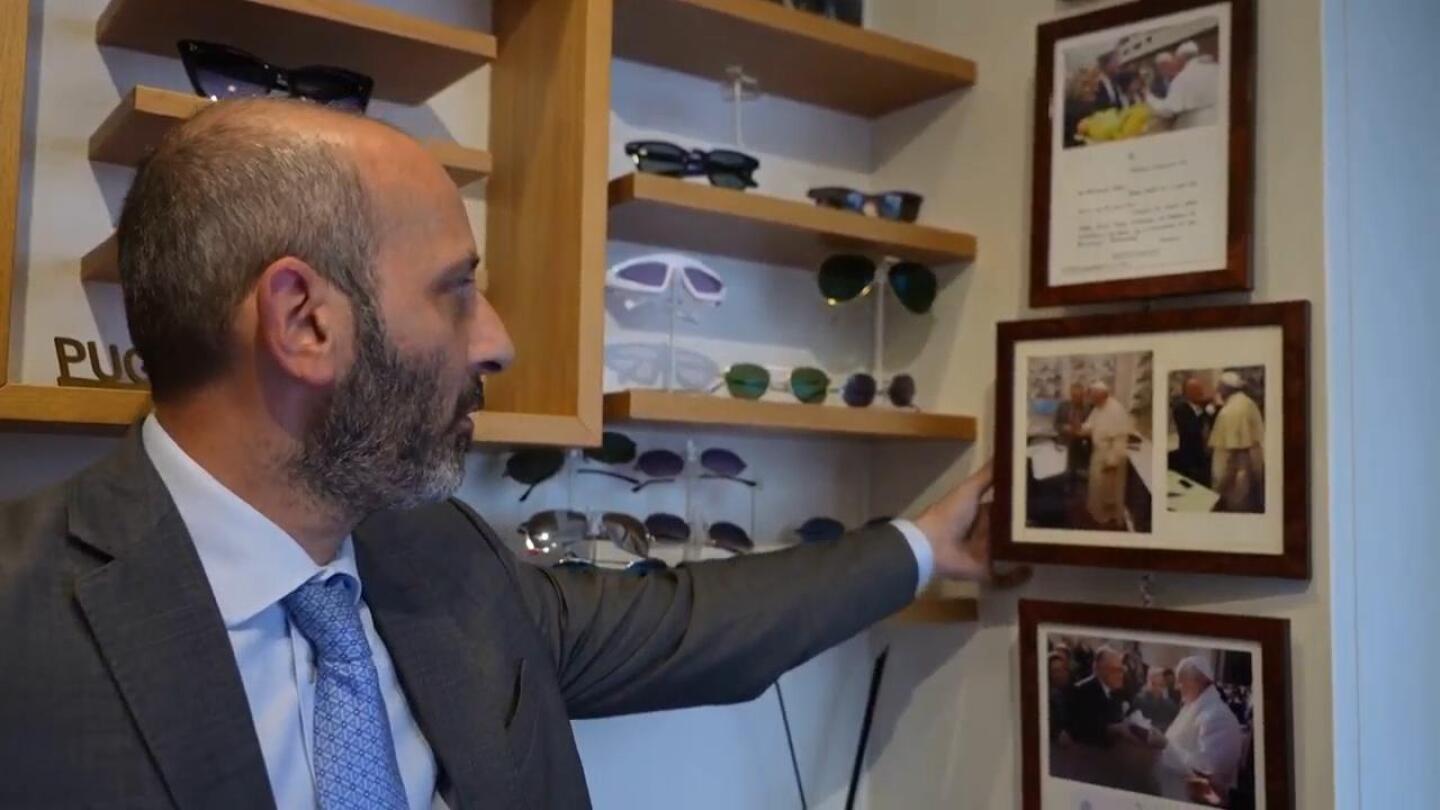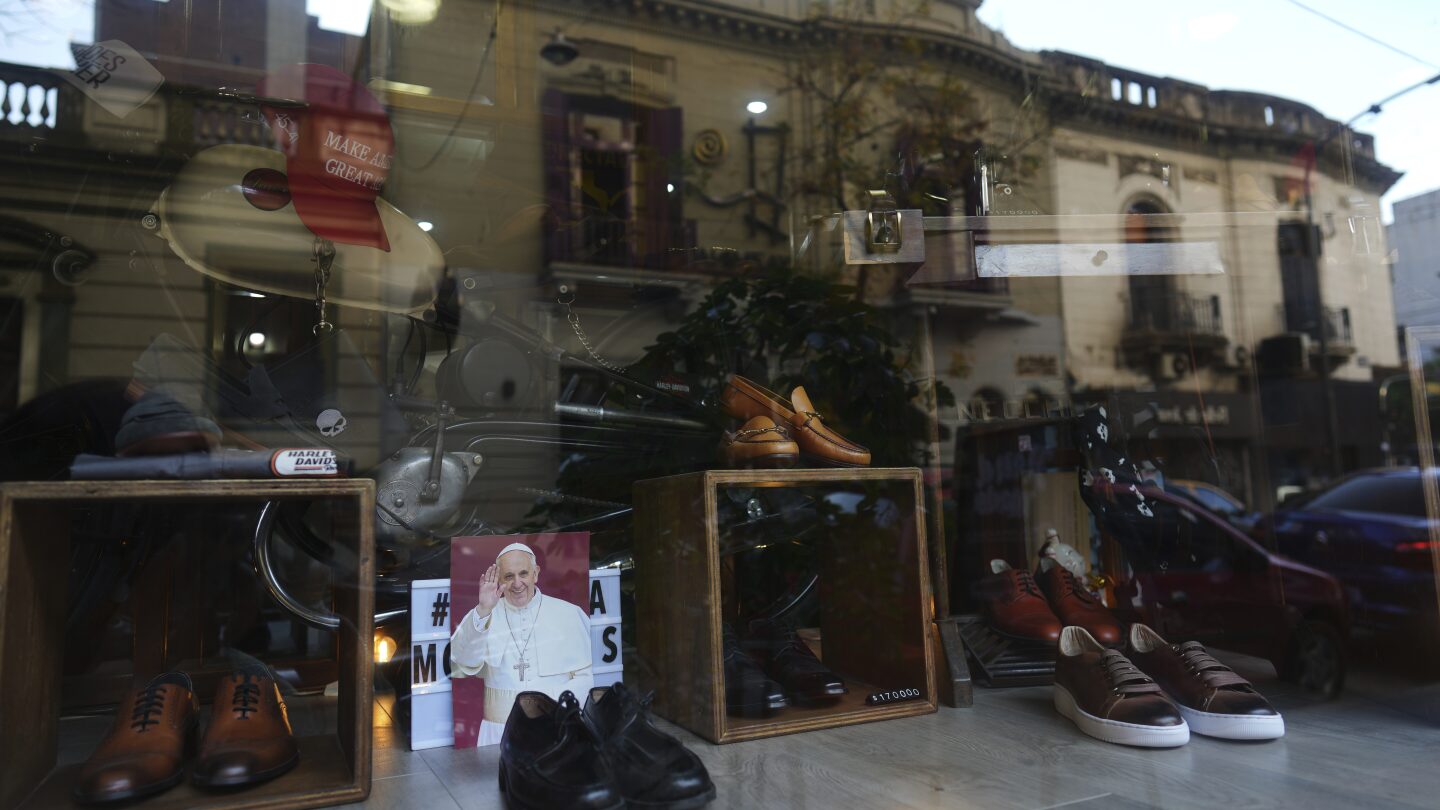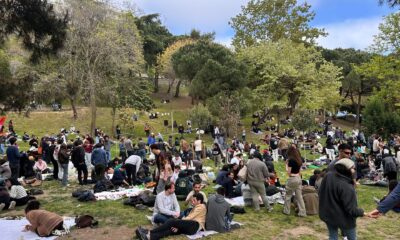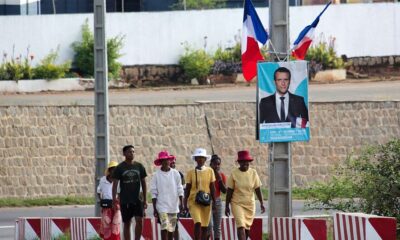Lifestyle
Thousands gather in New Mexico for the largest powwow in North America

ALBUQUERQUE, N.M. (AP) — Thousands of people are gathering in New Mexico for a celebration showcasing Native American and Indigenous dancers, musicians and artisans from around the world.
Billed by organizers as the largest powwow in North America, the annual Gathering of Nations festival kicks off Friday with a colorful procession of dancers spiraling into the center of an arena at the New Mexico state fairgrounds. Participants wear elaborate regalia adorned with jingling bells and dance to the tempo of rhythmic drumming.
The event also features the crowning of Miss Indian World, as well as horse parades in which riders are judged on the craftsmanship of their intricately beaded adornments or feathered headdresses and how well they work with their horses.
Powwow roots
Powwows are a relatively modern phenomenon that emerged in the 1800s as the U.S. government seized land from tribes throughout the Northern and Southern Plains. Forced migrations and upheaval during this period resulted in intertribal solidarity among Plains people and those from the southern prairies of Canada.
Alliances were formed, giving way to the exchange of songs and dances during gatherings between different tribes. In the decades that followed, powwows were advertised to pioneers heading westward as “authentic” Native American dance shows. For some, it was an exploitation of their cultures.
The word powwow was derived from pau wau, an Algonquian Narrtick word for “medicine man,” according to the Smithsonian Center for Folklife and Cultural Heritage. Scholars say English settlers misused the word to refer to the meetings of medicine men and later to any kind of Native American gathering.
Today, some of the large powwows like the Gathering of Nations have become more commercialized events that use dancing and drumming competitions with big prize money to provide a glimpse into Indigenous cultures.
Reconnecting with culture
At ceremonial dances, participants wear traditional regalia specific to their tribe, whereas powwow attire often is more contemporary and flashy with sequins and sparkles. It’s about dressing to impress the judges, said Warren Queton, a Kiowa Tribe legislator and adjunct instructor at the University of Oklahoma who has participated in community dancing and cultural events since he was a boy.
Queton, who served as the head gourd dancer at the university’s recent spring powwow, said ceremonial dances are deeply rooted in community, identity and cultural values.
It’s a struggle to keep traditional cultural practices and commercial powwows from being lumped into the same category, he said. They have very different meanings in Native American and Indigenous cultures.
There has been a focus on promoting smaller powwows held in tribal communities. Queton said these gatherings serve as a way for people who live elsewhere to return home and reconnect with their families and the land, and to share traditions with younger generations.
“Knowing where you come from, your land, your oral traditions, your language, but also values and traits — that can only be learned from a community,” he said. “That’s why those smaller dances are so important because people learn those community values. They’re all a part of our identity.”
Capturing good energy
There still are elements of tradition woven in to modern powwows. Competitors wear feathered bustles, buckskin dresses, fringed shawls and beaded head and hair pieces. Some of the elaborate outfits are hand-stitched designs that can take months to complete.
The sounds, movements and emotions that radiate from the dancing are challenging to capture on canvas. But Cochiti Pueblo painter Mateo Romero did just that when he partnered with the U.S. Postal Service to create a series of powwow stamps to be unveiled Friday during Gathering of Nations.
Powerfully hypnotic, atavistic and somatic is how the artist describes the dancing. One of his pieces depicts what is known as a fancy shawl dance with its dips, pivots, hops and twirls. Each tassel on the shawl flows and flips, accentuating the dancer’s movements.
Romero said he used color, thick and thin paint and soft and hard edges along with photographic elements to create something that feels alive, embedded with feeling and bright pops of color.
Romero called it a huge honor to transform powwow culture into a postage stamp filled with “good energy.”
“I look at it as a sort of vehicle to express this sentiment, the energy, the celebration, the vibration, the beauty of it,” he said. “It’s the power of it.”
Lifestyle
At shops around the Vatican, Pope Francis was a regular customer and a friend

VATICAN CITY (AP) — In the streets around the Vatican, where Pope Francis used to make impromptu outings, some of the shopkeepers are mourning the man they knew, not as the leader of a church or head of state, but as an ordinary person. They prayed for him while he was hospitalized, and now they miss him dearly.
“He had been our regular customer for more than seven years,” said Sebastian Padrón, an Argentine ice cream maker whose store is located around the corner from Francis’ austere hotel room in Vatican City. He recalled how close he and his family felt to Francis, who often gave gifts to his children.
“The memory is wonderful, which is why it hurts so much,” he told The Associated Press on Thursday. Francis had a notorious sweet tooth, and Padrón’s dulce de leche ice cream, a typical Argentine caramel dessert, became the pope’s favorite.
When Francis became pope in 2013, he opted to live in the Domus Santa Marta hotel rather than the lavish papal apartments of the Apostolic Palace, overlooking St. Peter’s Square. The choice spoke to his aversion to luxury, and an eagerness to mix with the masses. He moved around Rome in an ordinary hatchback and popped into stores to buy shoe insoles, change eyeglass lenses and buy recordings of classical music and tango from his native Argentina. He had lamented his inability to walk about freely as he did in Buenos Aires.
“I met a man who was full of smiles, very friendly,” said Raniero Mancinelli, a Roman tailor who sold the basic pectoral cross that Francis wore for decades. Mancinelli, who was tailor to the last three popes, said that, unlike his predecessors, Francis wanted everything to be simple, practical and inexpensive.
Mancinelli said he sold Francis a cardinal’s sash before the conclave that eventually elected him pope. He recalled Francis’ words upon learning the price of the garment:
“Raniero, you’re a bit of a thief, you’re a bit expensive.” The rest of his scarlet cardinal’s outfit, Francis regularly said, was a hand-me-down from his predecessor as archbishop of Buenos Aires.
Francis caused havoc among tourists and Romans several times when he showed up at an optician’s shop in Rome’s historic center.
Luca Spiezia, who owns the store with his father, remembered his surprise at the pope introducing himself simply as “Francesco” when they met in 2015. Offered a new pair of glasses, Francis declined, asking only for new lenses in his old frames and insisting on paying for the work.
“He never made you feel that he was a powerful figure in the world, even though he was the head of the church,” Spiezia said. “I hope that this will be continuing with the next pope.”
Lifestyle
Canadians put off by Trump’s bluster and border arrests are booking far fewer US visits

VANCOUVER, British Columbia (AP) — Diana and Rick Bellamy initially planned to take a Caribbean cruise out of Houston before heading to Laurel, Mississippi, to visit the home of one of their favorite HGTV shows, “Home Town.”
The Calgary couple scrapped those plans and vacationed last month along Mexico’s Pacific coast instead, put off by U.S. President Donald Trump’s trade war with Canada, the insults he’s hurled at their homeland, and stories about American border agents searching people’s phones and detaining foreigners for minor reasons.
She found it ironic that she felt more comfortable traveling to Mexico than the U.S.
“I never thought I would hear myself say that,” Diane Bellamy said.
Trump’s attacks on Canada’s economy and threats to make it the 51st state have infuriated Canadians, who are canceling trips to the U.S. in big numbers. They also seem to have also flipped the narrative heading into Canada’s parliamentary elections on Monday, with Prime Minister Mark Carney’s Liberal Party surging after trailing far behind in the polls just a few months ago.
A steep decline
The U.S. gets more visitors from Canada each year than from any other country, according to the U.S. Travel Association, an industry trade group, which said the 20.4 million visits from Canada last year generated $20.5 billion in spending.
But there has been a big drop in foreigners traveling to the U.S. since Trump took office, and Canadians are no exception. There were more than 910,000 fewer land border crossings from Canada into the U.S. last month than in March of 2024 — a more than 22% drop — according to U.S. Customs and Border Protection data. An Air Canada spokesman, meanwhile, said Canada-U.S. flight bookings for April through September are down about 10%.
Trump brushed aside the decline in tourism to the United States on Wednesday, saying, “There’s a little nationalism there I guess, perhaps. It’s not a big deal.”
Traveler worries
Since Trump started his second term, there have been well-publicized reports of tourists being stopped at U.S. border crossings and held for weeks at immigration detention facilities before being allowed to fly home at their own expense.
On March 3, Canadian Jasmine Mooney, an actor and entrepreneur on a U.S. work visa, was detained by U.S. border agents in San Diego. She was released after 12 days detention.
Before Mooney’s release, British Columbia Premier David Eby expressed concern, saying: “It certainly reinforces anxiety that … many Canadians have about our relationship with the U.S. right now, and the unpredictability of this administration and its actions.”
The Canadian Association of University Teachers, which represents faculty and staff at Canadian universities, warned its members against nonessential travel to the U.S. due to the “political landscape” under Trump and reports of Canadians encountering difficulties crossing the border.
Academics who have expressed negative views about the Trump administration should be particularly cautious about traveling to the U.S., said the group.
“People are scared to cross the border. I don’t know what Americans are thinking, quite frankly. Are they that oblivious?” said former Quebec Premier Jean Charest, who has family in Florida.
Mike Sauer, who runs a community policing center in Vancouver, said he and his partner have no interest in traveling to the U.S. now because of Trump’s politics and border fears. One of Sauer’s concerns is that if a border guard were to check his cellphone, the guard might see his past purchases of marijuana, which is legal to buy in Canada and about half the 50 states but is still illegal under U.S. federal law.
“The States have a different view on drugs. They could certainly look at my phone and see I’m 420-friendly,” he said, meaning he’s marijuana-friendly. “I think it kind of depends on which border guard would have a problem with that and which ones wouldn’t.”
Dietra Wilson, 32, said when she was younger, she often visited Detroit, which is just across the border from Windsor, Ontario, where she and her husband, Ben, own a secondhand shop. She hasn’t visited much in recent years, though, and she said she’s heard of people’s worries about crossing the border since Trump moved back into the White House.
“It’s worrisome,” she said.
Ben Wilson, 37, also has qualms about trying to cross.
“Why would I want to?” he said. “Regardless of the tariffs, if I’m going to be stopped at the border for my phone or something somebody texted me, why go?”
Industry worries
The drop in Canadian tourism to the U.S. led California Gov. Gavin Newsom, a frequent target of Trump, to announce an ad campaign this month meant to lure Canadians back to his state, citing a 12% year-on-year drop in February.
McKenzie McMillan, a consultant with a Vancouver-based travel agency, The Travel Group, said the company’s bookings to the U.S. have dried up. “We have seen a near-total collapse of U.S. business,” he said. “Probably about a 90% drop since February.”
Lesley Keyter, the CEO and founder of the Travel Lady agency in Calgary, said she’s seen people actually forfeit money to cancel their U.S. trips.
“Even if they’re going on a Caribbean cruise, they don’t want to go down to Fort Lauderdale to get on the cruise ship,” she said.
___
Gillies reported from Toronto. Associated Press reporter Corey Williams in Windsor, Ontario, contributed to this report.
Lifestyle
Pope Francis’ ordinary shoes bring pride to his Argentine neighborhood and his cobbler

BUENOS AIRES, Argentina (AP) — The man who would become Pope Francis always bought his shoes in the same small store. And now, the remarkably ordinary footwear that surprised and charmed millions has brought pride to his old Buenos Aires neighborhood — and to his cobbler.
The simple black shoes — a stark contrast to the flashy ruby red slippers of Francis’ predecessor, former Pope Benedict XVI — are among the pope’s personal effects that have captured attention as his death this week triggers an outpouring of emotion around the Roman Catholic world.
The seemingly comfortable loafers offer a powerful reminder of Francis’ humility, simplicity and lack of ceremony that helped him relate to ordinary people wherever he went.
A third-generation cobbler
The Muglia family men were the first cobblers in the middle-class Flores neighborhood of western Buenos Aires. Their shop, Muglia Shoes, opened in 1945, just a few years after Pope Francis was born Jorge Mario Bergoglio to Italian immigrant parents.
A photograph of the late Pope Francis sits in the window of the Muglia shoe store alongside the model of shoes that Jorge Bergoglio used in the Flores neighborhood where he grew up in Buenos Aires, Argentina, Thursday, April 24, 2025. (AP Photo/Natacha Pisarenko)
A pair of shoes like the ones regularly worn by Jorge Bergoglio are displayed at Muglia shoe store in the Flores neighborhood where the late Pope Francis grew up in Buenos Aires, Argentina, Thursday, April 24, 2025. (AP Photo/Natacha Pisarenko)
There wasn’t much competition, so when a young Bergoglio came in to buy shoes, it was Juan Jose Muglia’s grandfather who sold him the first pair. Bergoglio was in his 20s then, serving as a Jesuit priest at the Basilica of San José de Flores just around the block.
“My father, my grandfather, they told me stories about how Father Jorge came from the church around the corner to buy these shoes, they were the ones he liked, he wore them all the time,” Muglia, 52, told The Associated Press on Thursday.
“They’re simple, it’s the kind of shoes that waiters like to wear today, Muglia said, holding up a pair of the handmade lace-up loafers. “They can last you years and years.”
When Muglia took over after his father’s death, he added a poster of Elvis Presley, a Harley Davidson motorbike and a vinyl turntable to give the place a hipster note.
A time gone by
The racks now display newer fashions like pointy boat shoes and bright patent leather numbers.
But much of the shop remains the same, including the pinewood-paneled walls, floor-to-ceiling shelves of cream-colored shoeboxes and, of course, the leather black loafers with grippy, nonslip soles that Francis repeatedly purchased, inspiring local Catholic priests to do the same.
“Priests came here from all the basilicas in the city, some young priests even came from Rome to buy them,” said Muglia.
Juan Jose Muglia shows the shoe model, right, that was regularly worn by Jorge Bergoglio at the Muglia shoe store in the Flores neighborhood where the late Pope Francis grew up and where Muglia’s father and grandfather attended the former pope at their shop in Buenos Aires, Argentina, Thursday, April 24, 2025. (AP Photo/Natacha Pisarenko)
They sell for around $170 today — far more than the price-tag Francis saw — due to Argentina’s runaway inflation.
When Francis became pope in 2013, Muglia said he offered to send the pontiff off to St. Peter’s with a new pair of his favorite shoes. But he recalled Francis saying that his feet had become too swollen in his old age and he needed to find a more customized fit that he could depend on in Rome.
Papal footwear
Rather than adopt the typical papal shoes — red velvet or silk — as pope, Francis didn’t stray from his Flores roots.
He chose normal black shoes with an orthopedic sole — a far cry from the Byzantine era, when pilgrims customarily kissed a decorative cross embroidered on the papal shoe, and from the era of Pope Benedict, whose bespoke leather slippers in a succulent tomato red prompted Esquire Magazine to name the former pontiff “Accessorizer of the Year” in 2007, prompting intense speculation about the designer brand.
As years passed, beyond the occasional priest or parishioner who dropped into Muglia Shoes, few ever wondered about the brand of Francis’ plain footwear.
But that changed when Francis died on Monday at the age of 88, setting off a frenzy of interest about his Flores roots. Around the world, Francis was remembered for paring down the papacy’s inherited pomp to become more accessible — swapping the fur-trimmed velvet cape that popes had worn since the Renaissance for a simple white cassock, and preferring a Ford Focus to the usual papal limo.
As word spread about his original footwear and local journalists flooded the neighborhood, Muglia said curious customers have bombarded him with requests. He placed a framed portrait of Francis prominently in his window.
“It was a world of people,” Muglia said. “They came from everywhere.”
A neighborhood remembers
In Flores, the mourning for Francis feels personal. Residents remember him as someone who lived frugally, visited and advocated for the city’s poorest and could often be found sharing Argentina’s signature yerba maté drink with old friends and strangers.
At the newspaper stand just down the block from Muglia Shoes, vendor Antonio Plastina, 69, recalled how he and Francis made small-talk “like any two Argentines, a bit of this and that, some politics mixed with soccer.”
A woman prays by a statue of Jesus at the Basilica de San Jose de Flores, where the future Pope Francis, known as Jorge Bergoglio, first realized his calling to become a priest at age 17, in the Flores neighborhood where he grew up in Buenos Aires, Argentina, Thursday, April 24, 2025. (AP Photo/Natacha Pisarenko)
“He was a marvelous person, those are beautiful memories,” Plastina said, his eyes welling up. After becoming archbishop and cardinal, Francis still made the half-hour drive to Flores from downtown Buenos Aires every Sunday before church.
He always bought the two main Argentine daily papers, Plastina said, and read the news with a cup of coffee at the quiet cafe across the street, now a mattress store on a traffic-clogged intersection.
Although the crowds that poured into Flores upon learning of Francis’ death largely tapered out by Thursday, they left a mass of bouquets and handwritten notes to their beloved pontiff at the iron-barred windows of Membrillar 531, the modest house where Francis grew up as the eldest of five siblings.
“My vision is going but my memory is long,” said Alicia Gigante, 91, Francis’ neighbor and family friend, who stopped at the house on Thursday morning, leaning on her daughter for support.
“I’ll remember him for a long time, always his kindness, his smile, and that greeting, when you rang the doorbell and he came out into the street,” she said, her voice trembling. “There he was, always the same, he would caress you and bless you.”
A woman lights a candle by the confessional at the Basilica de San Jose de Flores where the future Pope Francis, known as Jorge Bergoglio, first realized his calling to become a priest at age 17, in the Flores neighborhood where he grew up in Buenos Aires, Argentina, Thursday, April 24, 2025. (AP Photo/Natacha Pisarenko)
-
Europe2 days ago
How to visit Rome for Pope Francis’ funeral and conclave
-

 Lifestyle2 days ago
Lifestyle2 days agoNFL draft suits give prospects another way to cash in on their fame, flash their style on red carpet
-

 Conflict Zones2 days ago
Conflict Zones2 days agoManhunt under way in Kashmir after deadly attack on tourists | Conflict News
-

 Education2 days ago
Education2 days agoHarvard’s president says the school will ‘not compromise’ on its rights with the Trump admin
-

 Middle East2 days ago
Middle East2 days ago‘I grabbed my cat and ran’: Istanbul panics as earthquake hits | Earthquakes News
-

 Africa2 days ago
Africa2 days agoEmmanuel Macron starts two-day visit to Madagascar
-
Africa2 days ago
Italy launches security plan ahead of pope’s funeral
-

 Europe1 day ago
Europe1 day ago‘The Art of the Deal’ meets global reality




